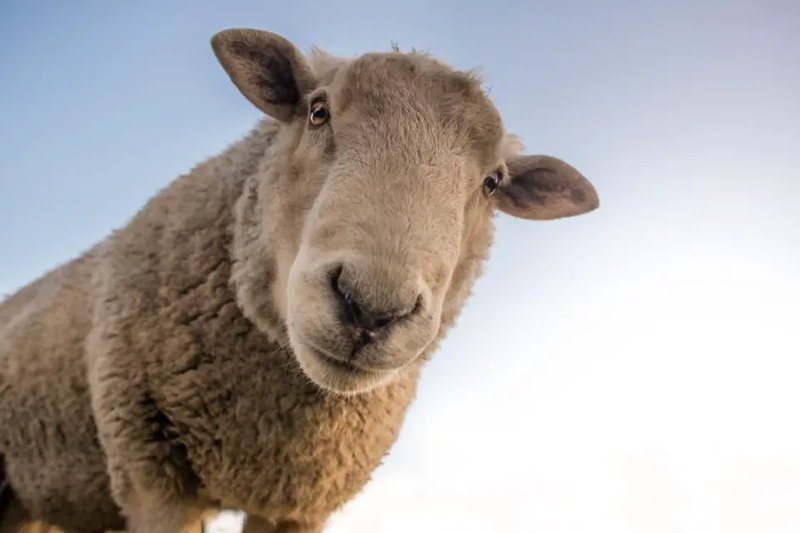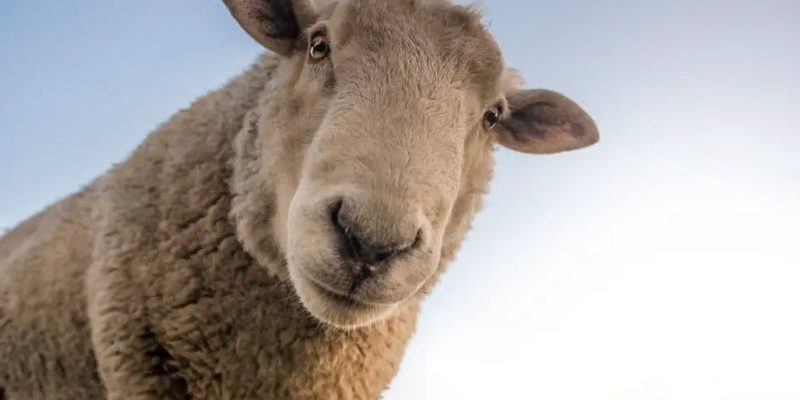
In this article, we’ll introduce ten animals that resemble sheep in various ways. Whether it’s their appearance, behavior, or habitat, each has its own distinctive characteristics. We’ll guide you through how to identify these creatures, from the woolly coats that remind us of sheep to the ways they interact with their environments. So grab a cup of coffee, and let’s dive into this fascinating world of fluffy friends!
The Goat: A Close Relative
When it comes to animals similar to sheep, goats often come to mind. They share a lot of traits, like their cloven hooves and herbivorous diets. However, goats tend to have more varied personalities and come in many breeds with unique features.
You might notice that goats are often more curious and adventurous than sheep. They love to climb and explore their surroundings, while sheep tend to stick together in a flock. If you see an animal nibbling on a tree branch or leaping onto a rock, it’s likely a goat, not a sheep.
In terms of appearance, goats have a more upright posture and often sport beards, especially males. Sheep, on the other hand, have a fluffier appearance due to their wool, which can be shorn and used for textiles. So, if you’re seeing an animal with a beard and a playful demeanor, congratulations, you’re looking at a goat!
The Alpaca: Woolly and Friendly
Alpacas are another fascinating animal that resembles sheep, thanks to their soft fur and gentle nature. Originating from the Andes mountains in South America, these domesticated animals are much larger than sheep but have a similar fluffy coat.
What makes alpacas stand out is their variety of colors—ranging from white and cream to black and even brown shades. While sheep have a more uniform wool texture, alpacas have a silky fleece that is highly prized for its softness. If you’re ever in a petting zoo and see a stylish, elongated neck with a friendly face, it’s likely an alpaca welcoming you!
Alpacas are also social animals. They thrive in groups much like sheep do, but they tend to communicate through a series of humming sounds, which can be quite endearing. So, if you find yourself hearing a gentle hum in the air, it’s a good chance you’re around these delightful creatures.
The Llama: The Alpaca’s Cousin
Often confused with alpacas, llamas share a lot of similarities but are larger and have longer faces. They also come from South America and are often used as pack animals due to their strength and endurance. One major distinction is their temperament: while alpacas are generally sweet and gentle, llamas can be a bit more assertive and protective.
You might find llamas with a more pronounced woolly coat on their bodies but a smoother face compared to alpacas. If you’re ever hiking in the mountains, spotting a llama with a pack can be a memorable experience—imagine seeing them glancing back at you, as if to say, “Are you ready to climb?”
Also, llamas are known for their distinctive vocalizations, which can sound like a mix of humming and even a sort of “barking.” So if you hear a more boisterous noise in comparison to an alpaca’s soft hum, it’s likely a llama making its presence known.
The Yak: A Resilient Beast
Yaks are robust animals that thrive in high-altitude environments like the Himalayas and Tibet. They are known for their long, shaggy hair, which keeps them warm in harsh conditions, similar to how sheep’s wool protects them from the elements.
The main difference lies in the size and structure. Yaks are much larger and stockier than sheep, with a strong build that allows them to carry heavy loads. If you’re hiking in a cold mountainous region, and you see a big, hairy animal with curved horns, it’s probably a yak and not a sheep!
Besides their impressive physical traits, yaks are also incredibly gentle and social creatures, often forming strong bonds with their herds. They communicate through a series of grunts and snorts, which can sound quite adorable, reminding us that companionship is essential even in the animal kingdom.
The Bongo: A Unique Antelope
Now, let’s talk about the bongo, a strikingly beautiful antelope. While it might seem like a stretch to compare it to sheep, bongos share a similar prey instinct and live in herds. Known for their reddish-brown coats and white striping, bongos have a distinctive appearance that sets them apart from your average sheep.
What sets bongos apart even more is their habitat. They’re typically found in dense rainforests in Africa, making them less commonly seen than sheep. Their long, spiraled horns can make them look quite majestic, giving them an air of elegance.
Though they might not be fluffy like sheep, bongos exhibit similar herd behavior, often sticking together for safety and social interaction. So, if you’re in a forested area of Africa and spot a herd of these striking creatures, you’ve likely seen the bongo in its natural environment.
The Mouflon: A Wild Sheep
If you’re looking for a true cousin of the domestic sheep, the mouflon is your best bet. This wild sheep is found in mountainous regions of Europe and Asia and is often considered one of the ancestors of domestic sheep. They have a rugged appearance with thick, curly horns, especially in males.
Mouflons are usually more agile than their domestic counterparts, which allows them to navigate rocky terrains with ease. If you spot a sheep-like animal with impressive horns scaling a cliff, it could very well be a mouflon rather than a typical farm sheep!
These animals are also more solitary compared to domestic sheep, often being seen alone or in small groups. Their wild nature gives them a certain charm, reminding us of the untamed aspects of livestock ancestry.
The Tahr: A Mountain Goat
The tahr might not be as well-known, but it’s another mountain-dwelling animal that bears a resemblance to sheep. Found in the Himalayas and other rugged terrains, tahrs have a thick, furry coat that can be similar to that of sheep, especially in winter.
One of the most telling differences is their body structure; tahrs have a more robust, muscular build compared to sheep. They are excellent climbers, thanks to their strong legs and cloven hooves, enabling them to navigate steep slopes effortlessly.
If you encounter a tahr, you’ll likely spot their distinctive shaggy fur, especially along their necks and thighs, making them look quite majestic against the rocky backdrop. They also tend to be more independent compared to domestic sheep, preferring to roam free in the wild.
The Ibex: The Rock Climber
And, finally, we have the ibex, a striking mountain goat renowned for its incredible climbing abilities. Their long, curved horns and impressive agility set them apart from sheep while still sharing some key traits. Ibex have a hardy build, perfect for the rocky terrains they inhabit.
You’re likely to find ibex in mountainous regions of Europe, Asia, and Africa. With their sharp eyesight and impressive balance, they can navigate steep cliffs that would challenge any sheep. If you ever see one standing proudly on a rocky ledge, it’s a breathtaking sight!
Visually, ibex are often more slender than sheep, and their fur can be longer and thicker, providing warmth in their cold habitats. If you’re hiking in the mountains, keep an eye out for these agile creatures—they might just show you what real mountain climbing looks like!
So, there you have it—ten animals that share similarities with sheep but each have their unique traits and characteristics. From the adventurous goat to the majestic ibex, these animals remind us just how diverse and fascinating nature can be. The next time you see a sheep, consider its distant relatives and the incredible ways they adapt to their environments.
Whether it’s their physical traits, behaviors, or habitats, these animals show us a world rich with variety. So take a moment to appreciate the woolly wonders around us—you just might find new favorites in the animal kingdom!

